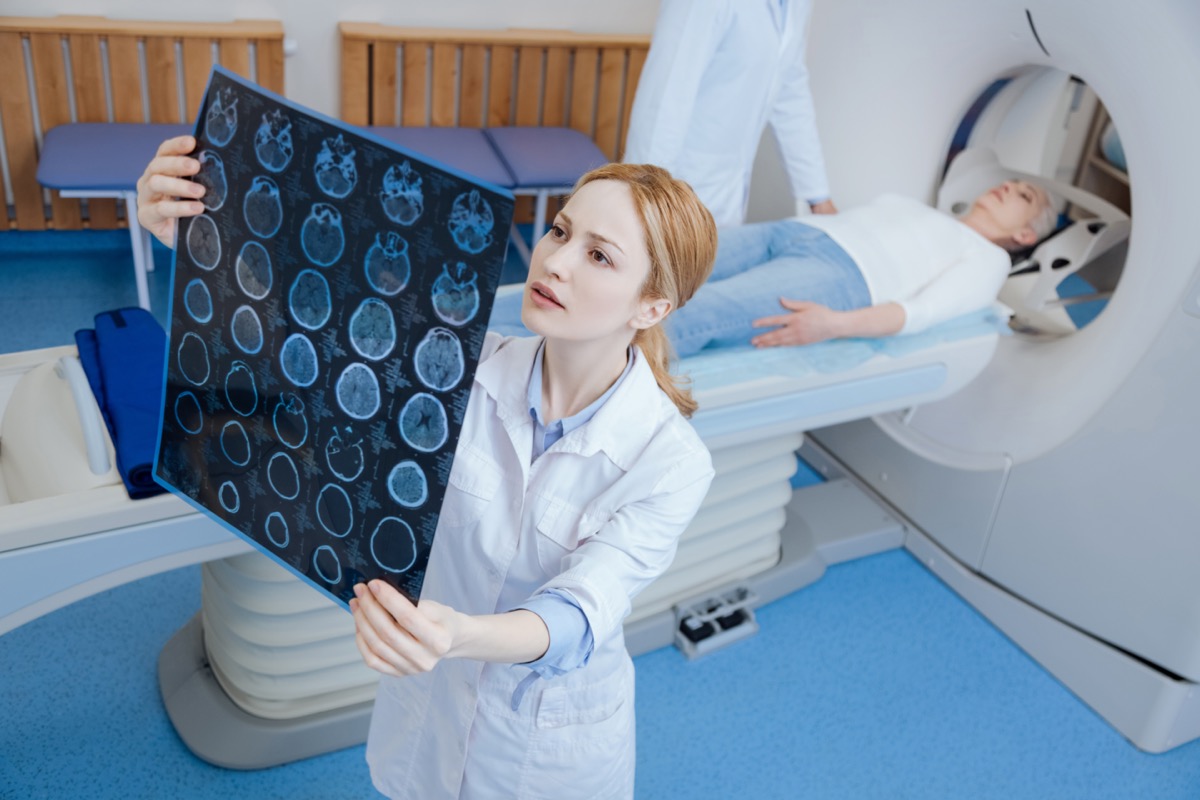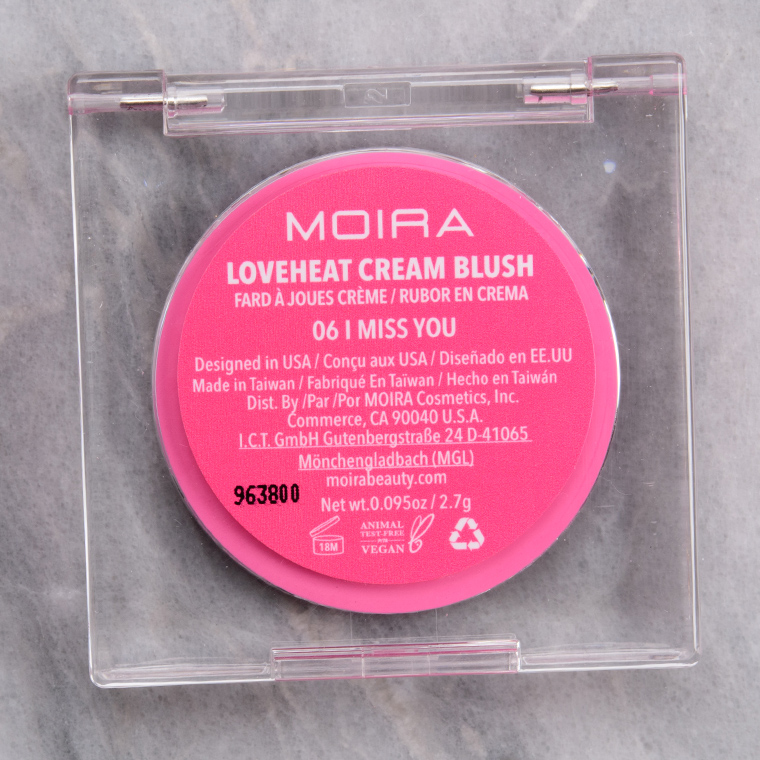If you're under 50, listen up! Research shows cancer rates are on the rise for young adults and the alarming trend implies it could be a global epidemic. The study by researchers at Brigham and Women's Hospital in Boston, and published the peer-reviewed journal Nature Reviews Clinical Oncology finds, "Over the past several decades, the incidence of early- onset cancers, often defined as cancers diagnosed in adults <50 years of age, in the breast, colorectum, endometrium, oesophagus, extrahepatic bile duct, gallbladder, head and neck, kidney, liver, bone marrow, pancreas, prostate, stomach and thyroid has increased in multiple countries."
There's several theories why cancer cases are increasing in people under 50. "A lot of smart people are trying to figure it out," Bhavana Pathak, MD, board certified hematologist and medical oncologist at MemorialCare Cancer Institute at Orange Coast Medical Center in Fountain Valley, CA tells us. "The obvious answers include people who are more sedentary, exercise less, and eat processed foods."
While it's certainly not good news that young adults are at an increased risk, the American Cancer Society says the chance of dying has declined. "The risk of dying from cancer in the United States has decreased over the past 28 years according to annual statistics reported by the American Cancer Society (ACS). The cancer death rate for men and women combined fell 32% from its peak in 1991 to 2019, the most recent year for which data were available. Some of this drop appears to be related to an increase in the percentage of people with lung cancer who are living longer after diagnosis, partly because more people are being diagnosed at an early stage of the disease."
Anton Bilchik, MD, PhD, surgical oncologist and division chair of general surgery at Providence Saint John's Health Center and chief of medicine and director of the Gastrointestinal Research Program at Saint John's Cancer Institute in Santa Monica, CA shares, "There are many possible reasons but there is a clear relationship between a more sedentary lifestyle, obesity, smoking and processed food. All of these factors are considered pro-inflammatory, leading to a disruption of the microbiome (bacteria in our body) and the immune system.
This disruption may remove the protective effect of some cells to prevent cancer and stimulate other cells to form cancers. It is also possible that with improved screening techniques (mammography, home based stool DNA tests, colonoscopy)and public education that more, younger patients are getting screened leading to detection of more cancers. Finally we have a better understanding of the importance of family history and genes that may lead to cancer at a younger age.
Sean Marchese, MS, RN, a registered nurse at The Mesothelioma Center with a background in oncology clinical trials and over 20 years of direct patient care experience says, "According to the 2023 Cancer Statistics released by the American Cancer Society, the incidence of some cancers, such as prostate cancer, is rising. Prostate cancer is the second leading cause of death in men and increased by 3% annually from 2014 through 2019. It's unclear why specific cancer incidences exist, but increased screening rates and sensitive detection methods may be finding more cases. More adults under 50 are seeing higher rates of cancer, which could be caused by poor diet and lifestyle choices. It's also possible that cancers that would have been missed before are now being diagnosed. More advanced technologies for detecting cancers exist, and more adults under 60 are getting screened."

Dr. Pathak says, "Treatment has indeed vastly improved to become more personalized and focused. One thought is that with the population aging and the biology of cancer starting from cells that have trouble repairing damage as we age, we continue to see its high prevalence."
Dr. Bilchik states, "Many cancers are more treatable but others such as pancreas cancer continue to be resistant to chemotherapy and present at a more advanced stage. With the increase in the number of patients being diagnosed with cancers, particularly at an early age it is understandable that it continues to be the second cause of death. There is optimism that this will change with more effective screening tests, a better understanding of the development of cancer and the availability of newer, more targeted therapies."
Marchese explains, "Cancer is much more treatable than it was years ago, but the fact is that we still don't have a cure for most major cancers. Cancer mortality has dropped 33% since 1991, a difference of an estimated 3.8 million cancer deaths. Many more patients go into remission or have more treatment options for aggressive cancers. More cancers are also being detected in earlier stages. However, the rate that cancer develops in the general population is still concerning, and more effort must be made to prevent exposures and risks that lead to cancer."

According to Dr. Bilchik, "It is now well established that exercise, a healthy balanced diet with fruit and vegetables, the avoidance of smoking and obesity, the intake of less red meat and processed food all reduce the risk of developing cancer. "
Marchese tells us, "People can educate themselves on their cancer risk by knowing their family history and how their environment or lifestyle could lead to cancer. Quitting smoking and eating a healthy diet are often apparent solutions, but other strategies, such as heart health and diabetes management, can also prevent cancer. Ask your doctor what your primary risk factors for cancer are and how to avoid them. Be on the lookout for hazardous chemicals or materials in your environment that could be carcinogenic, such as radon, asbestos, smoke or particulates."

A new study based on almost 8 million children from four European countries–Denmark, Finland, Norway, and Sweden, suggests that babies born from frozen embryos were more at risk to develop cancer. The findings were published in peer-reviewed journal PLOS Medicine. According to the study, "Children born after FET had a higher risk of childhood cancer than children born after fresh embryo transfer and spontaneous conception. The results should be interpreted cautiously based on the small number of children with cancer, but the findings raise concerns considering the increasing use of FET, in particular freeze-all strategies without clear medical indications."
Marchese says, "There is a limited body of research concerning the long-term health effects for children born from frozen embryos. The most common forms of disease related to embryo freezing have been abnormal central nervous system development and leukemia. The central nervous system is one of the first parts of the body to develop from the embryo. According to the research, the individual risk for cancer is low. Across all assisted reproduction techniques, there has been no increase in cancer rates."

Dr. Bilchik says, "Cancer rates are increasing predominantly in younger people under 50. It is not a disease of the "elderly" alone. Therefore more attention should be focused on lifestyle, exercise and nutrition at a young age. Furthermore, younger patients need to be aware of national screening guidelines for some of the more common cancers such as breast and colon cancer."
Marchese says, "People under 50 concerned about rising cancer rates should be aware that overall cancer mortality is decreasing. People are living longer, more comfortable lives after a cancer diagnosis. Clinical trials are developing more new treatments every day. While a cure may still feel like years away, treatments are becoming safer and more effective for all cancers."
The post Cancer Rates on the Rise: New Research Shows Alarming Trend appeared first on Eat This Not That.
----------------
By: Heather Newgen
Title: Cancer Rates on the Rise: New Research Shows Alarming Trend
Sourced From: www.eatthis.com/cancer-rates-on-the-rise-new-research-shows-alarming-trend/
Published Date: Sun, 05 Feb 2023 12:30:09 +0000
Read More
 HealthWellnessFitnessBeautyVideosPrivacy PolicyTerms And Conditions
HealthWellnessFitnessBeautyVideosPrivacy PolicyTerms And Conditions
